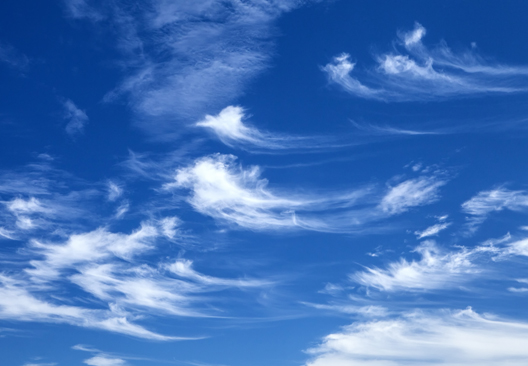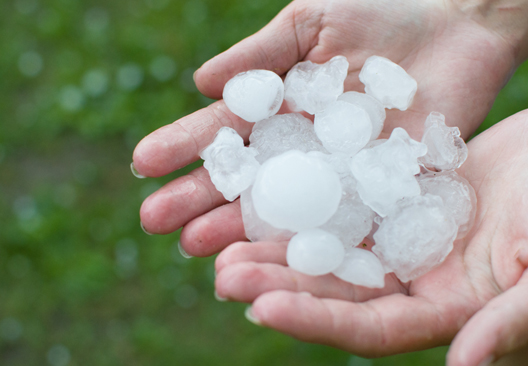5 Weather Facts for Kids
This article was originally posted in September of 2018 but was updated in April of 2020 for relevance and clarity, and to include additional weather education resources.
Looking for educational tools and science activities for your kids? There are teachable moments in most of our everyday activities – like replacing a flat bike tire or going for a walk. Here are five neat weather facts for kids:
1. Wind comes from changes in pressure

Check out your bike tire! If the pressure inside your tire is higher than the outside air, this may cause your bike tire to pop – you’ll hear a whooshing sound of air. Just like the wind coming out of your tire, changes in atmospheric pressure create wind that we feel but on a much larger scale.
2. Cirrus clouds are made of ice crystals

Cirrus clouds form so high in the sky that only ice crystals can form up there. They form above 20,000 feet (or 6,000 meters) where the atmospheric temperature is well below freezing (-20 to -30 C or -4 to -22 F). These thin and wispy ice clouds form in fair weather conditions and get their beautiful shapes from the strong winds at that altitude blowing them around. Visit our previous blog on cloud types for more information on how clouds are named and what altitude different kinds of clouds form.
3. Temperature in the sun vs. the shade

Meteorologists define the outdoor ambient temperature as the temperature in the shade. However, most of us don’t sit in the shade the entire time we’re outside, so it can often feel warmer outside that what the temperature sensor is measuring. This is due to the effect of solar radiation on our skin. The temperature in the sun can feel 10 to 15 degrees F warmer than in the shade! Learn more about the difference of temperature and feels like temperature here.
4. Determine freezing rain vs. sleet by the way it hits the ground

Sleet is rain that falls through a frozen layer in the air and turns to ice pellets before reaching the ground. When it hits the ground, it will bounce and not stick to surfaces on the ground.
Freezing rain, on the other hand, is rain that never falls through below-freezing temperatures, but if the ground is below freezing, then the rain freezes when it hits the ground and other surfaces. This creates a dangerous coating of ice on roads and sidewalks.
5. Hail develops during thunderstorms

Some people mistake hail for wintry precipitation like sleet, freezing rain, or even snow. However, hail is in a precipitation category all its own because it only can develop in strong updrafts during thunderstorm development.
As a raindrop falls through a thunderstorm cloud, it can be pushed back up by strong updrafts that strengthen the thunderstorm. This can force the raindrop to the highest levels of the cloud which are so cold the temperatures are below freezing. This will freeze the raindrop and it will become heavy and fall down through the large thunderstorm cloud again until possibly another updraft pushes it back up to the top of the cloud where it can create another frozen layer and grow larger in size.
This cycle continues until the hailstone is larger and heavier than the strength of the updrafts in the thunderstorm cloud. Hail the size of a quarter (1 inch in diameter) or larger is considered severe by the National Weather Service. Rare hailstorms have created large hailstones grapefruit size (4 ½ inches in diameter) and larger which can be very dangerous and even deadly
AcuRite has the weather monitoring tools to help you teach your kids about the weather and the environment around them. Whether you track data in your backyard with AcuRite gardening tools, AcuRite weather stations, or a daily weather journal, see first-hand how learning about the weather is one of the best ways to introduce kids to STEM (science, technology, engineering, and mathematics).
Have more weather facts to share? Or weather questions and tips you would like answered? Please leave your ideas and weather questions in the comments below. We’re always happy to provide more educational resources about weather and science!





